Samsung Galaxy S 5 Review
by Anand Lal Shimpi & Joshua Ho on April 8, 2014 12:00 AM EST- Posted in
- Smartphones
- Samsung
- Mobile
- Galaxy S 5
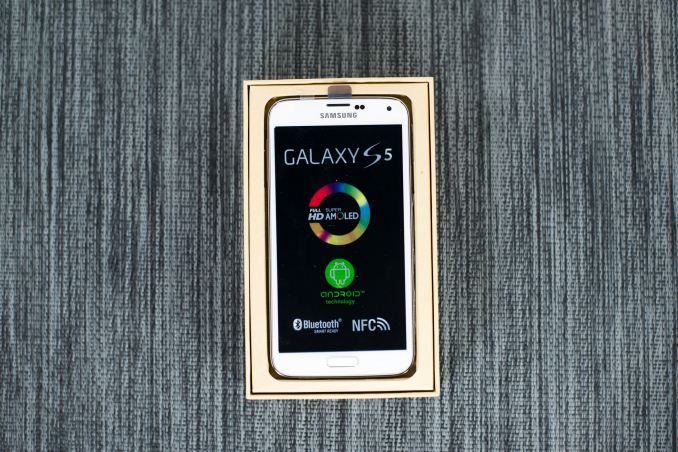
Samsung is now the undisputed king of the Android smartphone space. It was only a few years ago that the general public referred to every Android phone as a “Droid”. Now, it’s not uncommon for people to refer to every Android device as a “Galaxy”, and it speaks to the level of market penetration that Samsung has achieved with their Galaxy line-up. The Galaxy S series has been a sales hit, and with the initial impressions piece, it was said that the average consumer lives and dies by what’s familiar. Samsung continues to iterate with their Galaxy S line with consistent improvement and little, if no regression from generation to generation. This is where Samsung dominates, as the Galaxy S5 is clear evolution of the Galaxy S3 and S4, but made more mature.
The inspiration of the Galaxy Note 3 is also evident in the Galaxy S5’s design. Like the Note 3, the sides of the phone have the same ribbed chrome-colored plastic, which helps with gripping the phone. The front, like the Note 3, also has a subtle pattern beneath the glass. The same layout that has been used since the original Galaxy S is still mostly unchanged here.
There’s a single rectangular home button, with two capacitive buttons on the side and an earpiece on top, with holes for the sensors. There’s also a noticeable lip as you swipe off the glass lens, which is noticeably thicker than the one on the Galaxy S4. This lip keeps the glass from touching the surface if the phone is set face down on a table. The only major departure on the front is the capacitive button configuration which replaces the menu action overflow button with a multitasking button, something that has been sorely lacking from Galaxy phones, although this change is likely to annoy those that preferred to have a dedicated menu button. On the bright side, long pressing the multitasking button acts as an action overflow button.
On the back, the phone has undergone some serious changes, although it’s still quite familiar. The speaker is still present, as is the camera bump with the flash module underneath. The heart rate sensor is also next to the flash, and the single speaker is on the back as well. What’s really interesting is that the texture is no longer glossy. The back has a grid pattern of indentations in it that help with gripping the phone, and there’s a noticeable texture that seems to resemble the same pattern that the Note 3 had, but there’s no stitching to suggest a faux-leather texture. Along the sides, the power button is on the right side, the volume rocker on the left. The IR transmitter continues to be in the same position that it was before, as is the 3.5mm headphone jack which is on the top right. The microUSB 3.0 port is on the bottom, covered by a flap that is supposed to protect against water immersion according to IP67 spec.
Overall, while the Galaxy S5 isn’t as nice in the hand as the HTC One (M8), it’s certainly not as bad as the Galaxy S4 or S3. I have to say that compared to the GS4, the back makes a huge difference in improving the feel of the device. It's not what I'd consider premium (despite the GS5's price point), but it's much better than before.
While the Galaxy S4 and HTC One were generally comfortable to use, the Galaxy S5 and HTC One (M8) are both teetering at the edge of too large. I found that both are effectively sitting right at the edge of what I’d consider to be usable with one hand. HTC continues to have a bit more ergonomic shape as the rounded back cover fits in the hand better, although it makes the phone have a higher maximum thickness.
Taking off the back cover of the phone, it’s clear that the entire phone has been designed with water resistance in mind, as there’s a rubber gasket all along the back cover, and there’s an extra plastic snap in the center that helps to ensure that the gasket seals the phone properly. The GS5, like the GS4 Active, retains an IP67 (Ingress Protection) rating. The first digit (6) indicates that the design is fully sealed against dust, while the second digit indicates that the device is submergible up to 1 meter for up to 30 minutes. Another consequence of this need to waterproof the phone is that taking apart the phone for repair is no longer done by removing screws from the cover that is underneath the backplate unlike the Galaxy S4. Instead, based upon some teardowns done by others, repairing this phone must be done by removing the display first, then the midframe and the rest of the phone can be accessed for repair. In short, the assembly of this phone most closely resembles the Galaxy S4 Active, which is hardly surprising because both are IP67 certified. However, as Samsung emphasized at their launch event, this doesn’t make the Galaxy S5 waterproof in any way.
Outside of the physical construction of the device, the Galaxy S5 continues to ship the latest and greatest hardware for its time. Samsung has used the MSM8974ACv3 Snapdragon 801 for this phone, an updated AMOLED display with a claimed 500 nit brightness for outdoor visibility, and a new ISOCELL 16MP camera sensor. A comparison of the Galaxy S4 and S5 can be seen in the table below.
| Samsung Galaxy S4 | Samsung Galaxy S5 | |
| SoC | APQ8064AC 1.9 GHz Snapdragon 600 | MSM8974ACv3 2.45 GHz Snapdragon 801 |
| RAM/NAND | 2 GB LPDDR3, 16/32GB NAND + microSD | 2GB LPDDR3, 16/32GB NAND + microSD |
| Display | 5” 1080p SAMOLED HD | 5.1” 1080p SAMOLED HD |
| Network | 2G / 3G / 4G LTE (Qualcomm MDM9x15 UE Category 3 LTE) | 2G / 3G / 4G LTE (Qualcomm MDM9x25 UE Category 4 LTE) |
| Dimensions | 136.6 x 69.8 x 7.9 mm, 130 grams | 142 x 72.5 x 8.1 mm, 145 grams |
| Camera |
13MP (4128 x 3096) Rear Facing with 1.12 µm pixels, 1/3.06" CMOS size, 31 mm (35mm effective), 2MP F/2.4 FFC |
16MP (5132 x 2988) Rear Facing with 1.12 µm pixels, 1/2.6" CMOS size, 31 mm (35mm effective), 2MP FFC |
| Battery | 2600 mAh (9.88 Whr) | 2800 mAh (10.78 Whr) |
| OS | Android 4.4 with Nature UX 2.0 | Android 4.4 with TouchWiz |
| Connectivity | 802.11a/b/g/n/ac 1x1 + BT 4.0, USB2.0, GPS/GNSS, MHL, DLNA, NFC | 802.11a/b/g/n/ac 2x2 + BT 4.0, USB3.0, GPS/GNSS, MHL, DLNA, NFC |
| SIM Size | MicroSIM | MicroSIM |
Outside of camera, display, and SoC, battery gets a noticeable bump and a new higher voltage chemistry (3.8V vs 3.85V) , the WiFi solution becomes a dual spatial stream solution, and there's a mild increase to size and mass.


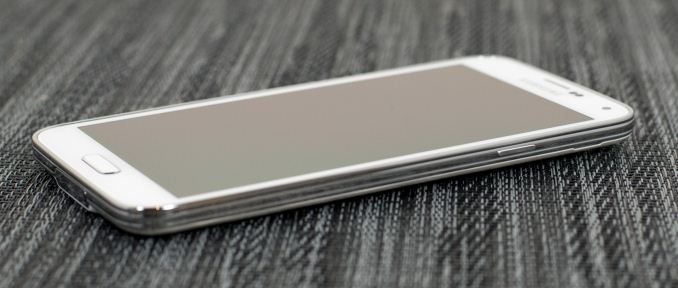
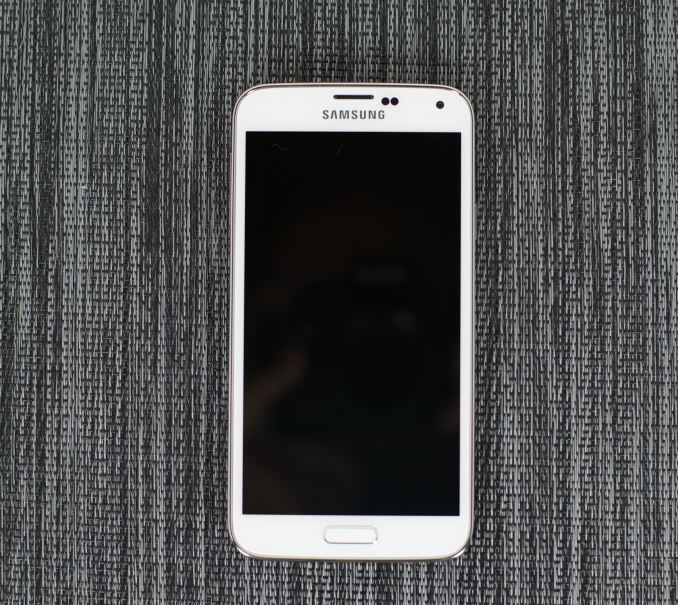
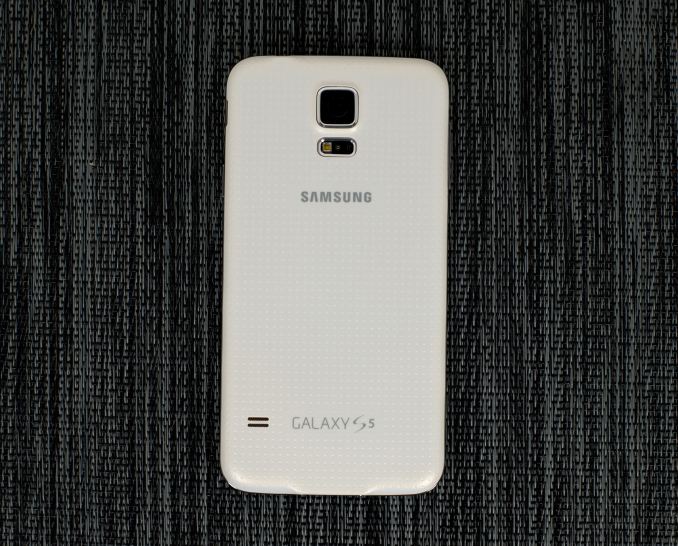
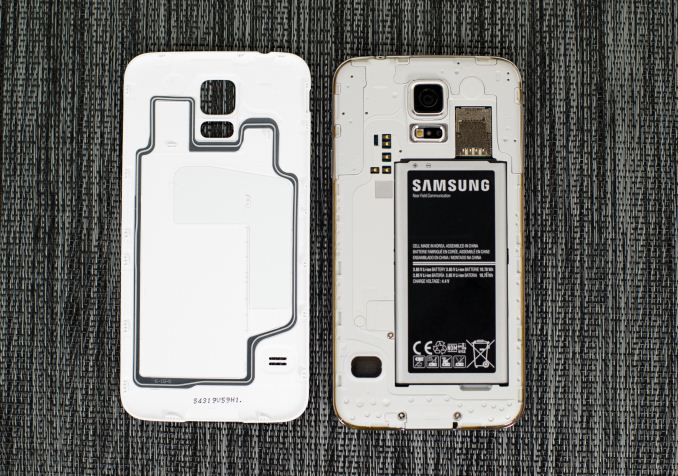








296 Comments
View All Comments
Saltank - Wednesday, April 9, 2014 - link
Not a single word about actually making phone calls? No call quality / HD Voice stuff? I was awestruck by how awesome my iPhone 5 handles regular non-HDVoice calls, and the GS3 was good, too, but my old HTC One was subpar.Also, how come camera comparisons don't take WP's in to account? No Lumia 1020/1520/930?
Lightstorm66 - Wednesday, April 9, 2014 - link
I thought Anandt ech knew that the Samsung Browser is faster than chrome and achieves in the Galaxy S5 even better results than the iphone 5s in sunspider.Galaxy S5: 385,8 ms
iphone 5s: 414,7 ms
ryanmt - Wednesday, April 9, 2014 - link
The LG G2 is the unsung camera hero here. It outperforms it all. Why are only the HTC M8 and 5S called out for their good low light performance when the G2 is actually (subjectively) better?echo9251 - Wednesday, April 9, 2014 - link
There should be more talk about the lack of a 64MB option. I have a 64MB HTC One (M7) and enjoy never having to worry about running out of storage for apps, etc. Losing half my storage is a big disincentive to "upgrading" to a new phone.Brian Z - Wednesday, April 9, 2014 - link
Well they did include a micro SD card that supports up to 128gb.I am not going to make the case that having more storage considering the outrageous prices of the these devices. But at a point it gets a ridiculous. People complain loud OMG no external storage. No buy. Then they make 32gb device with expandable storage. People still complain
Streamlined - Thursday, April 17, 2014 - link
Uh, because SD cards are dog slow compared to storage on the motherboard. SD CARDS SUCK and that is why HTC includes larger storage options. Just another reason the M8 is the best Android phone money can buy.Myrandex - Wednesday, April 9, 2014 - link
I'm disappointed no Nokia's showed up in the camera tests. I've love to see how this lined up with my Lumia 920, particularly in the low light tests. My wife's 1020 is a beast too.Souka - Wednesday, April 9, 2014 - link
Here's a another way to test durability and take apart a S5https://www.youtube.com/watch?v=newNF1UsOcw
dlang1234 - Wednesday, April 9, 2014 - link
What I'm most impressed by, is how well the LG G2 is performing at these benchmarks against much newer phones. I have had my G2 for a while now, and it is an awesome phone.. so much so that these phones look more like side grades than upgrades even though, I mean it was released September 12, 2013 and now almost 6 months later, the epic increases of speed in mobile seems to be subsiding some.chrcoluk - Wednesday, April 9, 2014 - link
agreed.I own a S3 and a galaxy ace.
The galaxy ace has cyanogen mod 7.2 installed on it.
The S3 has touchwiz based on android 4.3
In terms of hardware spec the S3 is many multiples more powerful than the ace.
However many basic functions are much snappier on the ace, in particurly using it as a phone, bringing up the call log, scrolling the call log, making calls, answering calls, opening contacts, all these functions much faster on the ace. The ace also wakes up immediatly whilst the S3 has wake lag, the ace has much longer lasting battery even tho it has a weaker battery. However the ace does suck when it comes to using it for the internet/gaming most 3rd party apps as thats where its hw spec hits it, but its limitations are mostly down to its lack of ram. IT seems to always have more spare cpu cycles than the S£ as the S3 is bogged down by touchwiz.
So why havent I got the S3 on AOSP. google edition etc? the problem is the contacts/dialer app on AOSP sucks really bad, its aweful. Especially with the default white background. Samsung have at least maintained a half decent UI design in their dialer/contacts the problem is its mega laggy. But sadly UI design wins over performance. CM7.2 has the best ever dialer/contacts I have seen on a android phone but new phones cannot use CM7.2.
I have recently decided to start using the ace as my main phone (its easier to use out and about also due to its smaller size) and primarily use the S3 as a portable computing device. That way I can stick AOSP on the S3 and not worry about the crappy contacts app.
Do samsung deliberatly make their interface laggy? not sure, its certianly possible tho as they want to give a people a reason to upgrade to the next phone every year.
Also notice how every new software update increases the fotn size as well, to give people a reason to want the higher DPI. The relative font size looks equal on my ace vs the S3 even tho the S3 has a way higher resolution.